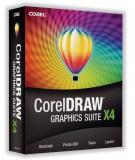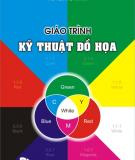Tài liệu Thư viện số
- Công nghệ thông tin (949 )
- Kinh tế (1569 )
- Môi trường (1238 )
- Khoa học tự nhiên (1146 )
- Khoa học xã hội (1256 )
- Tiểu học - Mầm non (988 )
- Nghệ thuật (715 )
- Giáo dục chính trị (893 )
- Tài liệu tham khảo khác (307 )
Danh mục TaiLieu.VN
- Mẫu Slide Powerpoint
- Luận Văn - Báo Cáo (344720)
- Kinh Doanh Marketing (65512)
- Kinh Tế - Quản Lý (48934)
- Tài Chính - Ngân Hàng (55898)
- Công Nghệ Thông Tin (142209)
- Tiếng Anh - Ngoại Ngữ (47066)
- Kỹ Thuật - Công Nghệ (134345)
- Khoa Học Tự Nhiên (107174)
- Khoa Học Xã Hội (82451)
- Văn Hoá - Nghệ Thuật (54408)
- Y Tế - Sức Khoẻ (173915)
- Nông - Lâm - Ngư (62504)
- Kỹ Năng Mềm (29016)
- Biểu Mẫu - Văn Bản (27610)
- Giải Trí - Thư Giãn (51994)
- Văn Bản Luật (198854)
- Tài Liệu Phổ Thông (402015)
- Trắc Nghiệm Online (213578)
- Trắc Nghiệm MBTI
- Trắc Nghiệm Holland
Tài liệu nổi bật
Kết quả 37-48 trong khoảng 949
-
Lecture Computer graphics - Lecture 29
After you read this chapter you should be able to: Describe various types of network attacks, and identify ways to safeguard against these attacks, including firewalls and intrusion detection software; discuss techniques to prevent unauthorized computer access and use; identify safeguards against hardware theft and vandalism;...
16 p dthu 23/01/2024 10 0
-
Lecture Computer graphics - Lecture 30
After you read chapter 8 you should be able to: Discuss the purpose of the components required for successful communications; describe these uses of computer communications: wireless messaging services, wireless Internet access points, cybercafés, global positioning systems, collaboration, groupware, voice mail, and Web services; differentiate among types of networks: LANs, MANs, and WANs;...
20 p dthu 23/01/2024 7 0
-
Lecture Computer graphics - Lecture 26
In this chapter, you learn what is input and output devices. The keyboard is presented and different keyboard types are described. You are introduced to various pointing devices, such as the mouse, trackball, touchpad, pointing stick, joystick, touchscreen, and pen input. Scanners and reading devices, including optical scanners, optical readers, magnetic ink character recognition readers, and data collection devices are explained,...
12 p dthu 23/01/2024 7 0
-
Lecture Computer graphics - Lecture 31
This chapter explains various storage media and storage devices. Students discover how memory is different from storage. Floppy disks are introduced, and characteristics of a floppy disk, floppy disk drives, care of floppy disks, and high-capacity floppy disks are presented. Hard disks are explained, and students find out about characteristics of a hard disk, how a hard disk works, removable hard disks, hard disk controllers, RAID, and...
51 p dthu 23/01/2024 8 0
-
Lecture Computer graphics - Lecture 32
This chapter defines system software and discusses two types of system software: operating systems and utility programs. You learn what an operating system is and explore user interfaces, operating systems features, and operating system functions.
35 p dthu 23/01/2024 8 0
-
Lecture Computer graphics - Lecture 24
You are introduced to various pointing devices, such as the mouse, trackball, touchpad, pointing stick, joystick, touchscreen, and pen input. Scanners and reading devices, including optical scanners, optical readers, magnetic ink character recognition readers, and data collection devices are explained,...
14 p dthu 23/01/2024 12 0
-
Lecture Computer graphics - Lecture 28
After you read this chapter you should be able to: Discuss the importance of project management, feasibility assessment, documentation, and data and information gathering techniques; discuss the purpose of each system development phase; differentiate between lowlevel languages and procedural languages;...
14 p dthu 23/01/2024 9 0
-
Lecture Computer graphics - Lecture 2
This chapter have surveyed the major hardware and software features of computer graphics systems. Hardware components include video monitors, hard-copy devices, keyboards, and other devices for graphics input or output. Graphics software includes special applications packages and general programming packages.
10 p dthu 23/01/2024 9 0
-
Lecture Computer graphics - Lecture 7
The following will be discussed in this chapter: Identify the four categories of application software, describe characteristics of a user interface, identify the key features of widely used business programs, identify the key features of widely used graphics and multimedia programs,...
11 p dthu 23/01/2024 8 0
-
Lecture Computer graphics - Lecture 4
LCD basically consists of a layer of liquid crystal, sandwiched between two polarizing plates. The polarizers are aligned perpendicular to each other (one vertical and the other horizontal), so that the light incident on the first polarizer will be blocked by the second. This is because a polarizer plate only passes photons (quanta of light) with their electric fields aligned parallel to the polarizing direction of that plate.
17 p dthu 23/01/2024 9 0
-
Lecture Computer graphics - Lecture 3
In this lecture we will focus: Understanding the basic concepts and parameters related to an image and physical display screen, understanding the basic display technology employed in raster scan CRT with reference to the architecture of a CRT, understanding the theory of colour display with reference to graphics memory and CRT circuitry.
15 p dthu 23/01/2024 7 0
-
Lecture Computer graphics - Lecture 6
The following will be discussed in this chapter: Identify and briefly describe various broadband Internet connections, describe the types of Internet access providers, explain the purpose of a Web browser and identify the components of a Web address, describe how to use a search engine to search for information on the Web,...
17 p dthu 23/01/2024 6 0
Đăng nhập
Bộ sưu tập nổi bật























